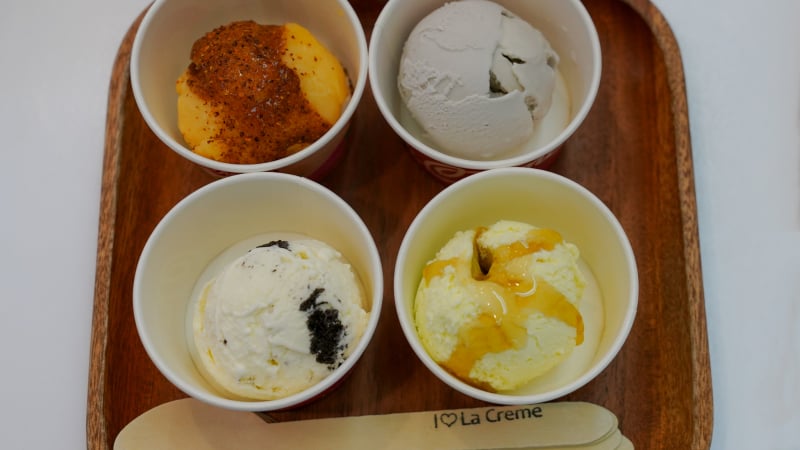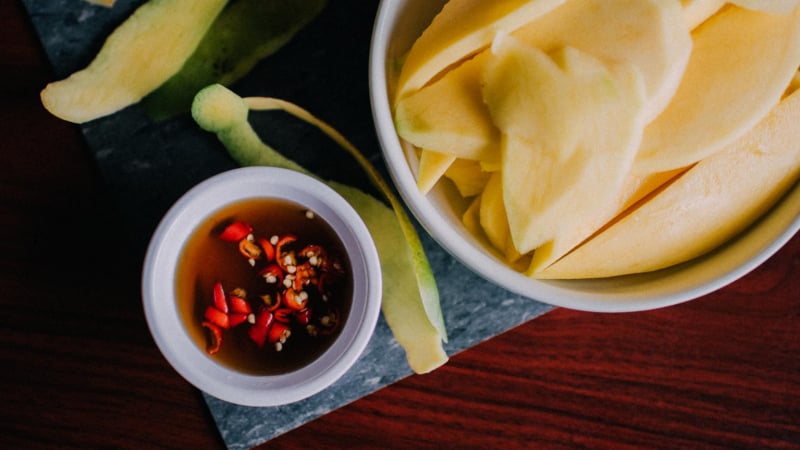“La melon, Lang basil, Bang spring rolls, Ban sauce, Van Van fish sauce, Set lagoon perch” is a song that many people in Hai Phong used to tell each other. Among them, Van Van fish sauce, famous in the ancient Indochina region, is today’s Cat Hai fish sauce.
Archaeological documents show that Cat Ba people knew how to make fish sauce about 5,000 years ago. According to traditional experience, the main ingredients to make the premium Cat Hai fish sauce are mackerel, fresh squid, then anchovy, and anchovy. Then, with only fresh fish and salt, through the steps of marinating, mixing, and kneading with time, sun, and wind of the sea, skilled workers have created a famous dipping sauce, comparable to famous specialties of the whole country.
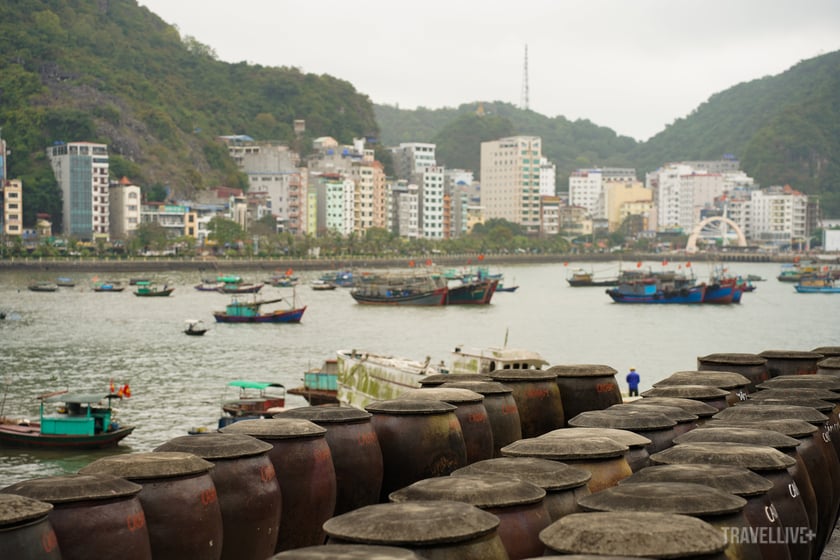

Cat Hai fish sauce is still one of the famous fish sauce brands in the country.
At No. 85 Cat Ba fishing port on a morning in late March, Mr. Bui Duc Hue’s traditional fish sauce production facility was carrying out the steps of fermenting, marinating, and mixing fish to make fish sauce as usual. Currently, Mr. Hue’s facility owns more than 500 jars of fish sauce and about 20 tanks of fish sauce that are being soaked and fermented, giving off a strong fermented aroma.
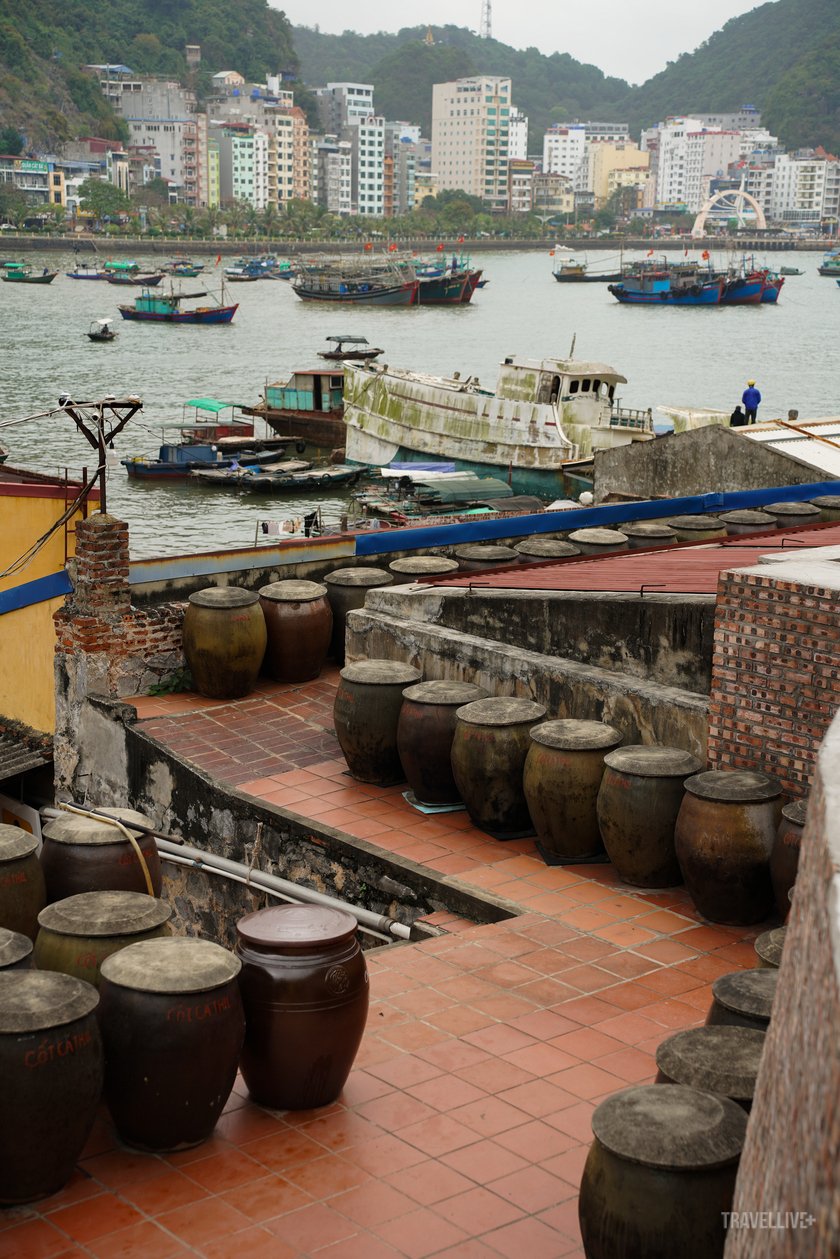
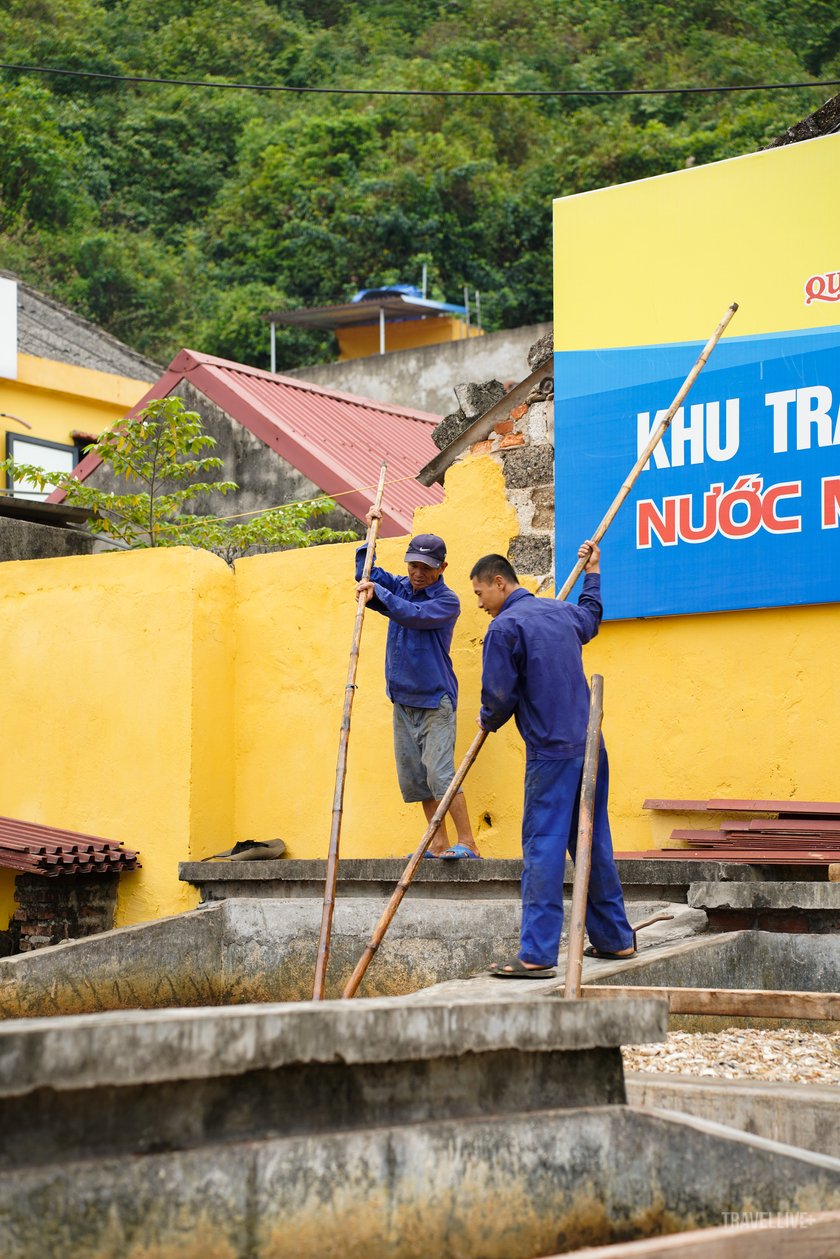


Mr. Bui Duc Hue's Cat Hai fish sauce production facility on Cat Ba Island
Mr. Hue said that the traditional fish sauce making profession is not for the impatient. Fresh sea fish must be imported directly from local fishermen's boats, cleaned and sorted, and marinated with purified salt that has undergone technological processing. Fish and salt are marinated in a certain ratio depending on the type of fish, kept in tanks or jars, and left under sunlight to accumulate potential (vitamin D) that has the effect of destroying harmful bacteria, he shared.
“During the 12 months of waiting for the fish to “ripen”, the craftsman “must take care of the fish sauce like a baby”. Depending on the weather conditions, observe the color and taste, recognize when the fish “demands” salt, when there is excess salt, and add or reduce it. Then look at the sky, the sea, the clouds to prepare to take the fish sauce out to stir, dry it in the sun or cover it tightly to avoid rain. All activities are based on the years of experience accumulated by the craftsman”, Mr. Hue said.
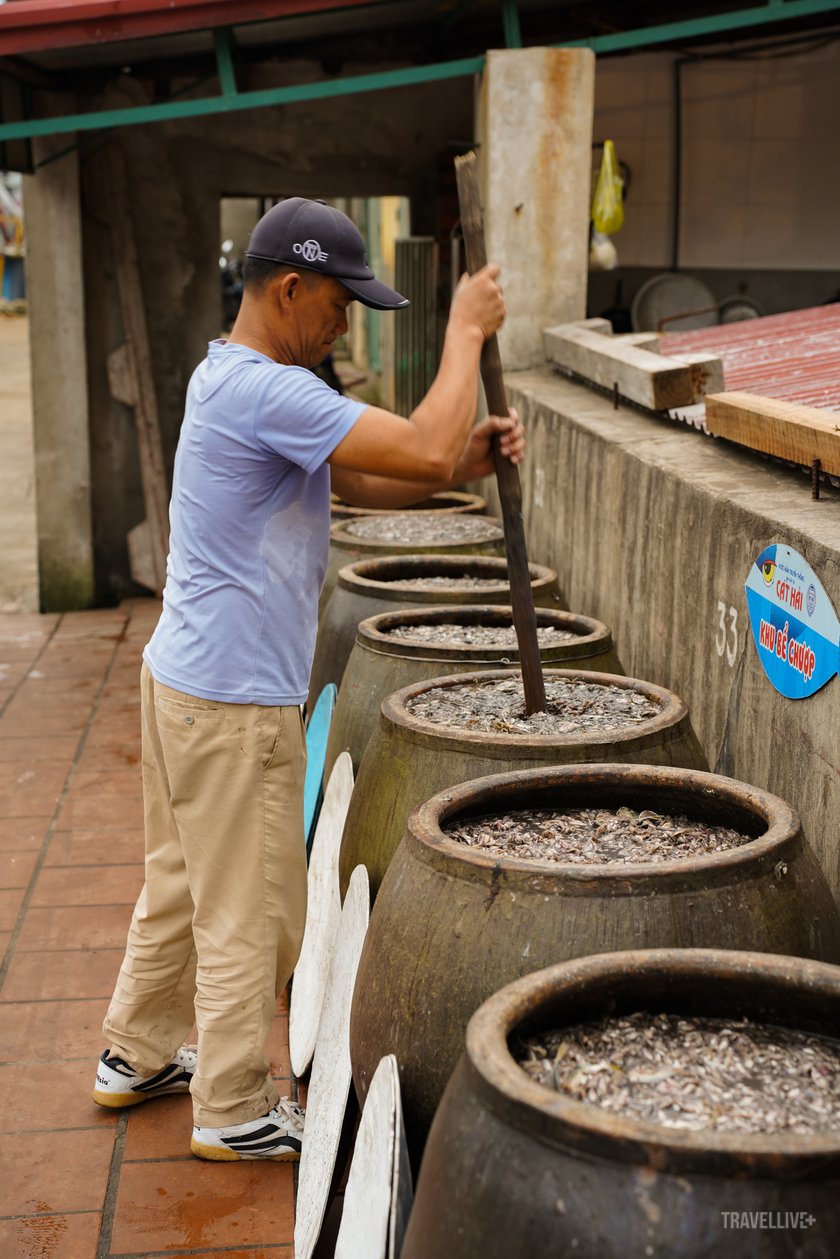

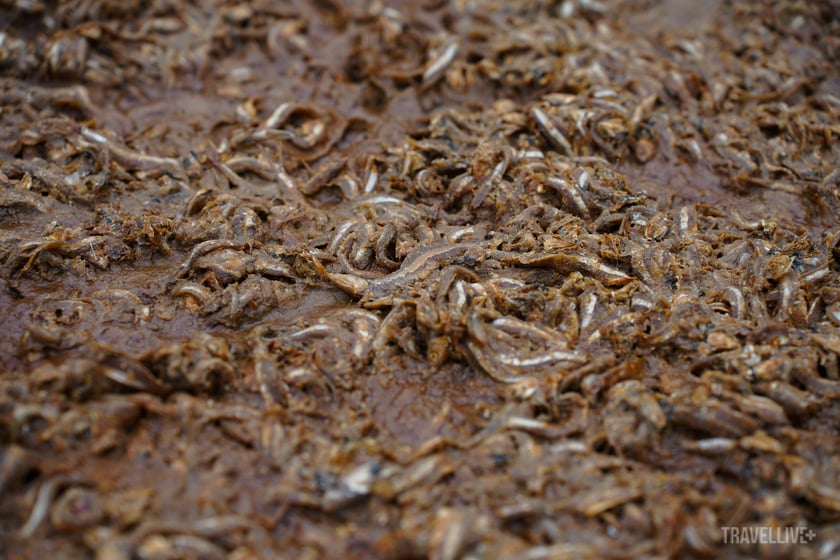
Fish used to make fish sauce is carefully selected and processed through many stages to produce the finished product.
After fermenting for about a year, the fish begins to produce essence, the worker needs to separate the water and residue to cook and process according to traditional fish sauce processing techniques. The filtered fish sauce is stored in earthenware jars and buried underground for about 2 years to produce the finished product.
At Mr. Hue’s facility, there are more than 10 types of fish sauce made from mackerel, tuna, and anchovy. Of these, tuna fish sauce has the highest price, 450,000 VND per liter.
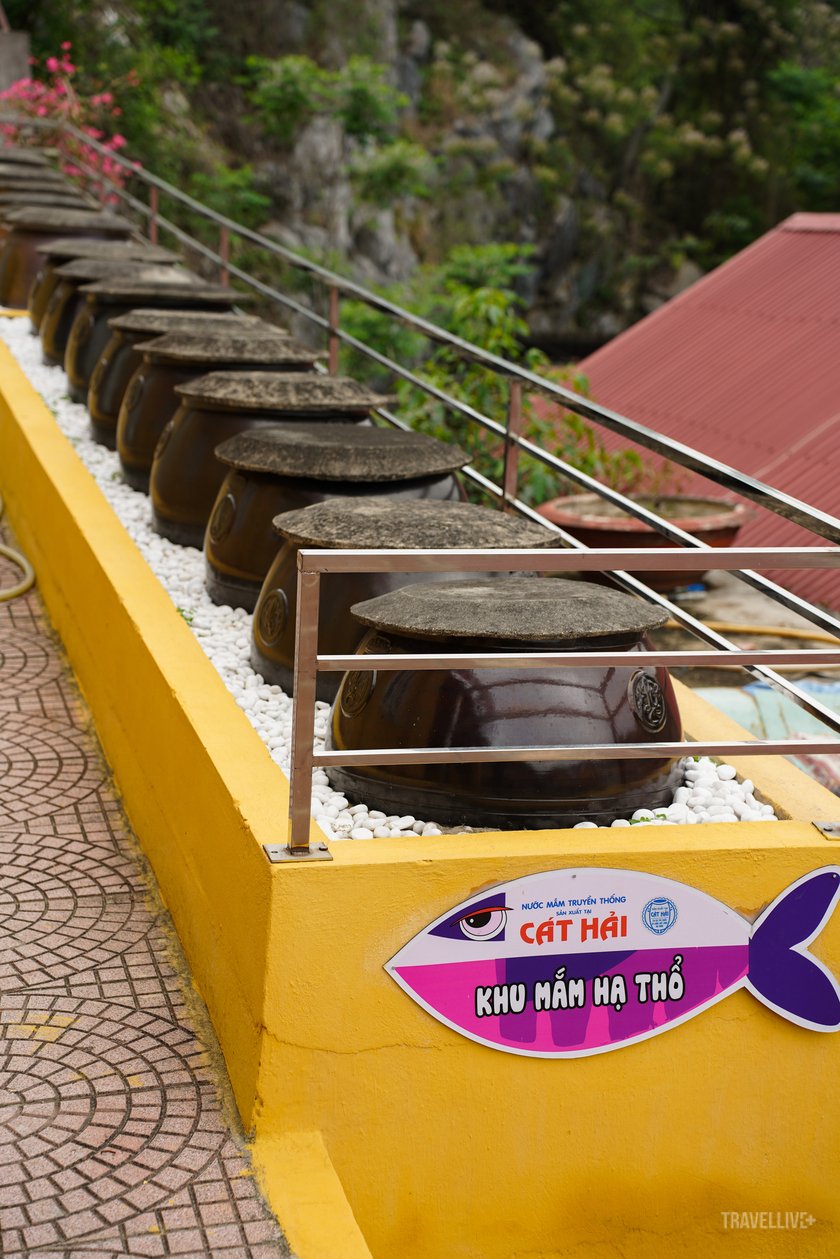



Cat Hai fish sauce has many flavors with diverse prices.
Cat Hai fish sauce is an indispensable part of every family’s meal on the island. At the same time, it is also a popular gift for many tourists when visiting Cat Ba.
Ms. Bui Thi Na, 60 years old, an employee at the facility for 10 years, in charge of welcoming tourists, said that from the end of April to September, the factory regularly welcomes visitors to admire the process of making the famous fish sauce of the coastal region. On average, the facility welcomes about 500 - 700 visitors a day, mainly tourists traveling in groups, including tourists from Korea, China, and Europe.

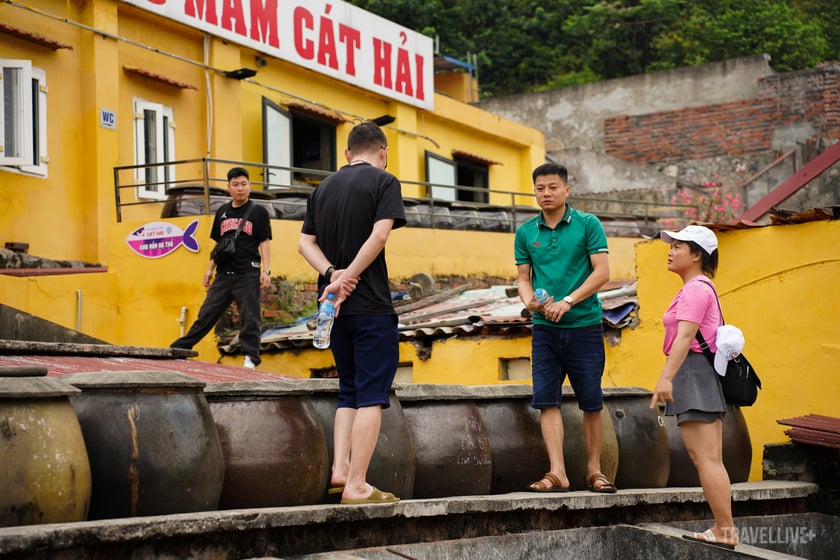
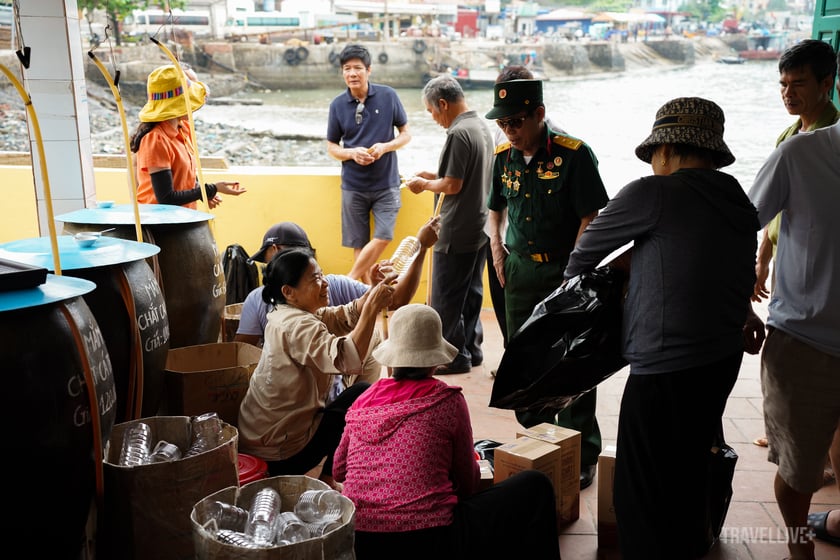
Tourists visit, observe the fish sauce making process and buy it as gifts.
Ba Na also shared the folk experience, there are three ways to recognize good, quality fish sauce. The easiest way is to taste and observe the color, feel the flavor. Fish sauce has a shimmering brown color, strong aroma, rich flavor, leaving a saltier aftertaste than industrial fish sauce. The second way, turn the fish sauce bottle upside down and observe, if the fish sauce does not have bubbles or scum, it is good fish sauce. The last way is to drop a few grains of cold rice into the fish sauce bowl, if the rice grains float, it is good fish sauce, high in protein.
Cat Hai fish sauce is rich in protein with many micronutrients such as amino acids, vitamins PP, A, D, B1, B2, B12, minerals (salt, iodized salt) which are essential for the human body. Cat Hai fish sauce does not use any catalysts, all the aroma and rich flavor are created from traditional secrets passed down through many generations, ensuring food hygiene and safety standards (HACCP).
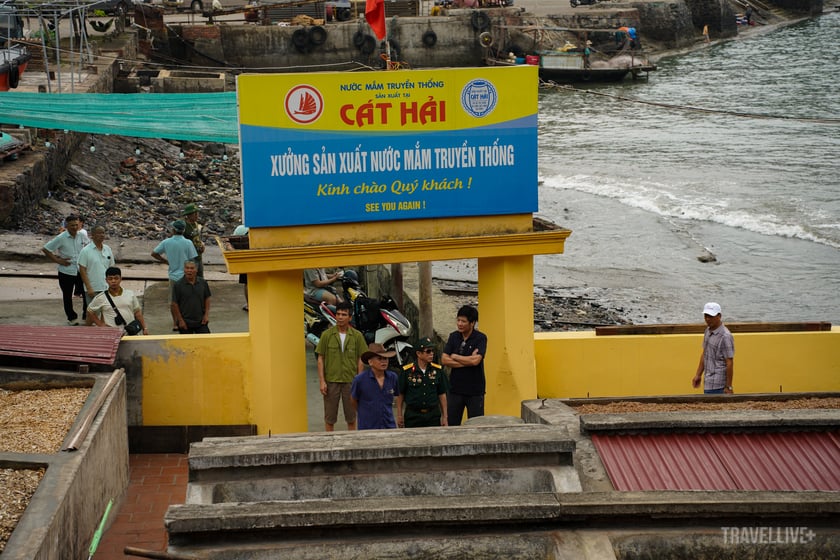


Cat Hai fish sauce has been registered for trademark protection throughout the Vietnamese market and exported to a number of foreign markets.
“When the tide rises, the boat rises”, Cat Hai fish sauce has been gradually transformed from jars, pots, and vats to glass bottles with banana leaf stoppers and finally to branded plastic bottles appearing on shelves in large agents, stores, and supermarkets. Some Cat Hai fish sauce brands have been registered for protection in the entire Vietnamese and Chinese markets, and are increasingly appearing in the Chinese, Eastern European, American, Philippine, and Lao markets. This has demonstrated the preservation, maintenance, and strong development of a traditional craft village that has now become a cultural feature of the people of the port city of Hai Phong.






